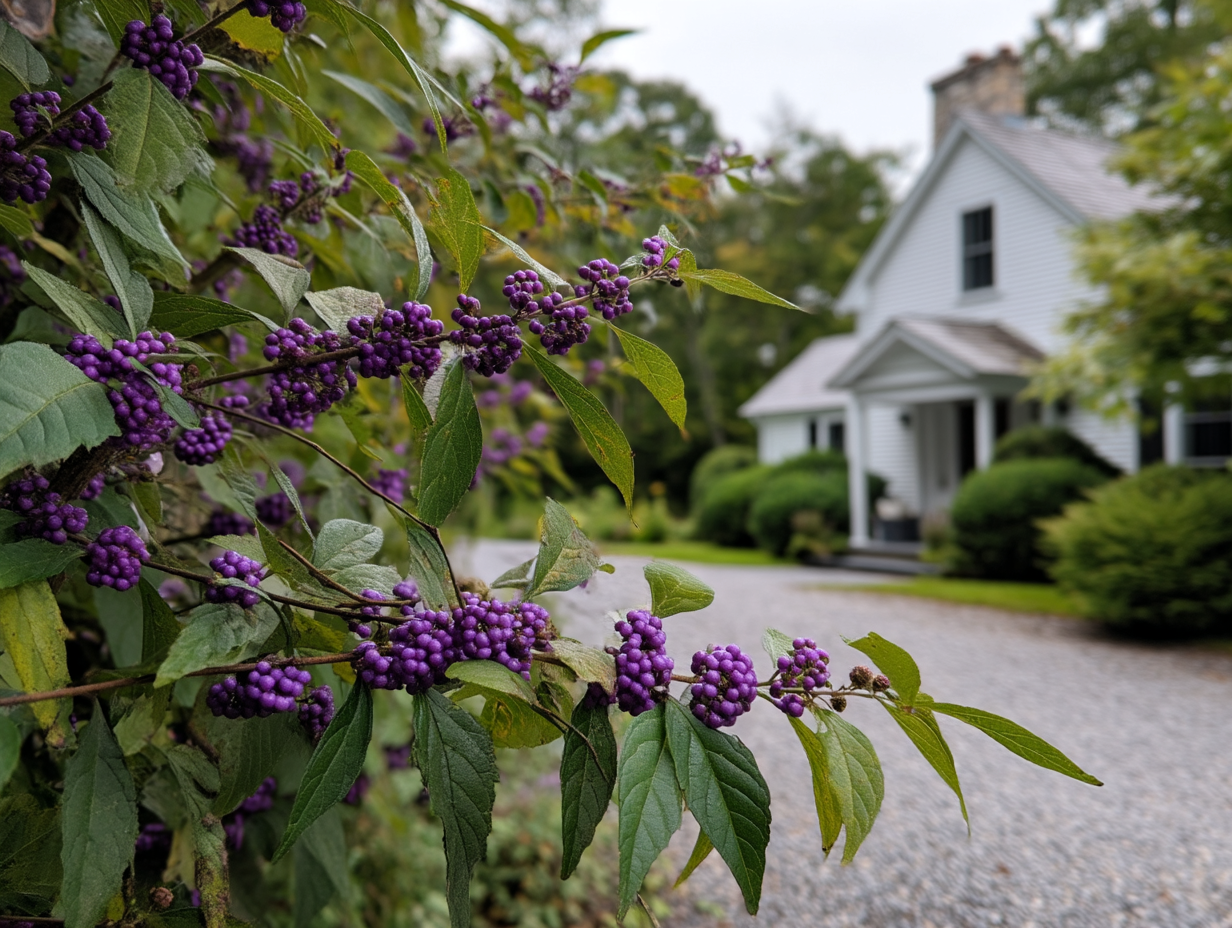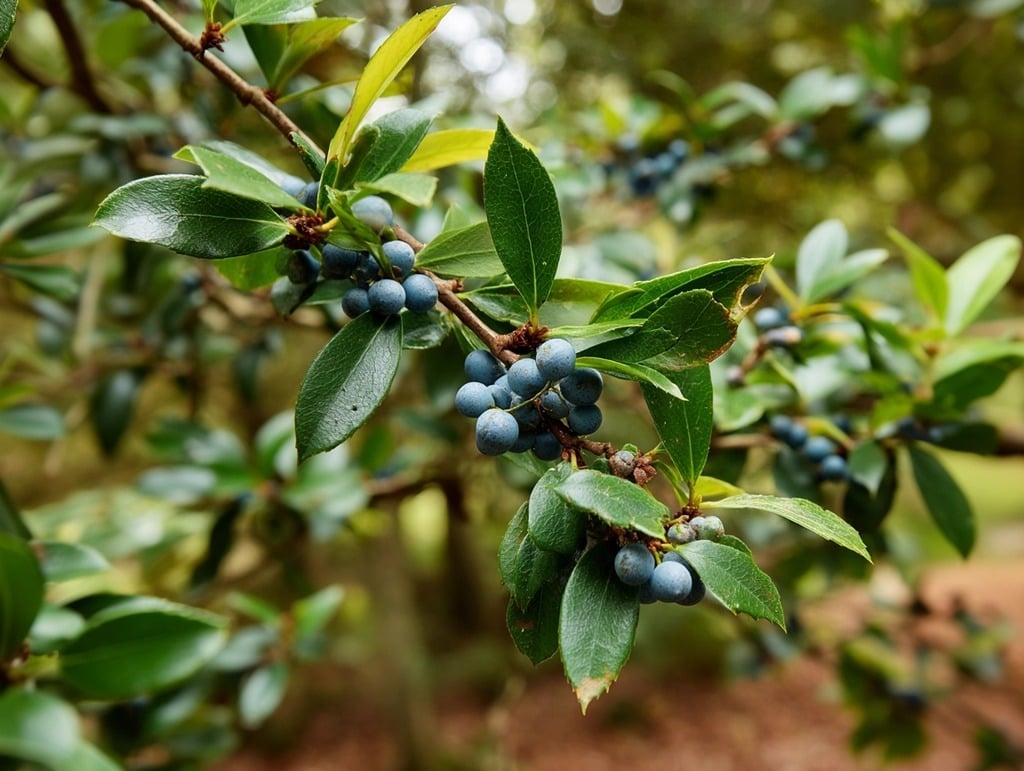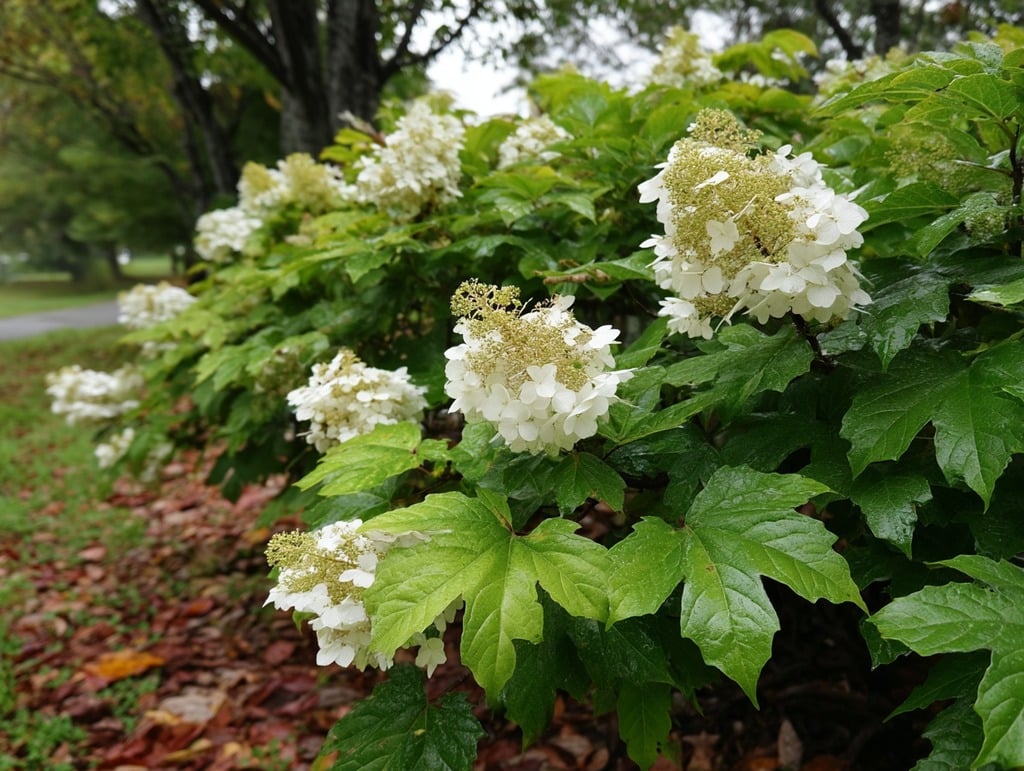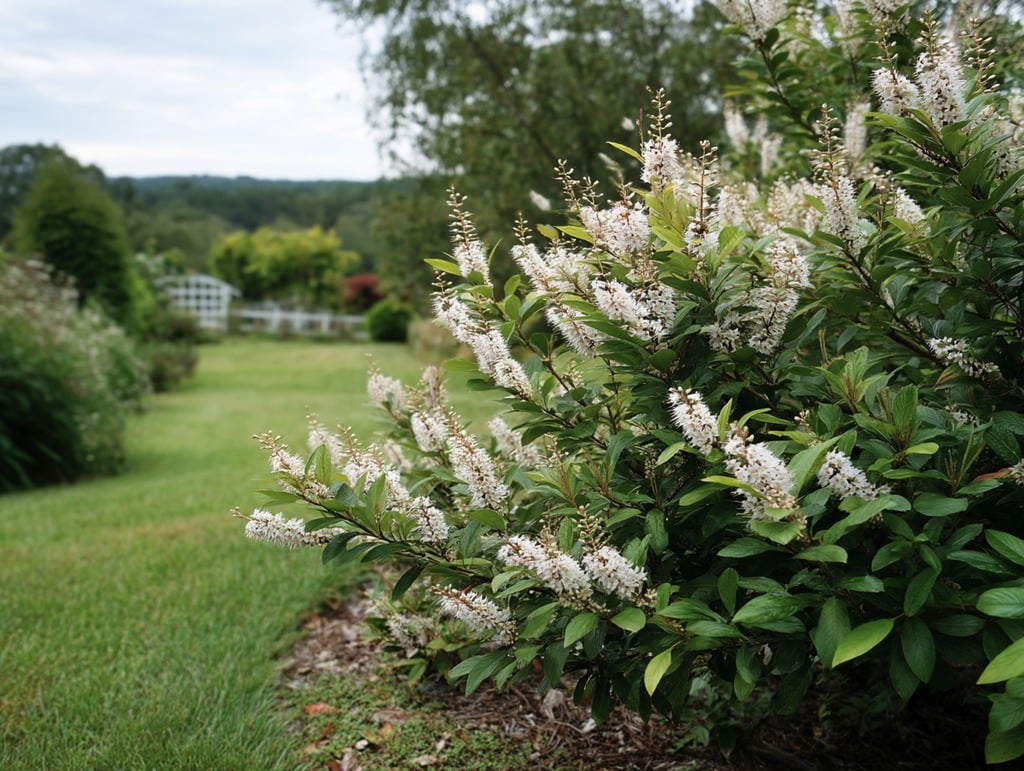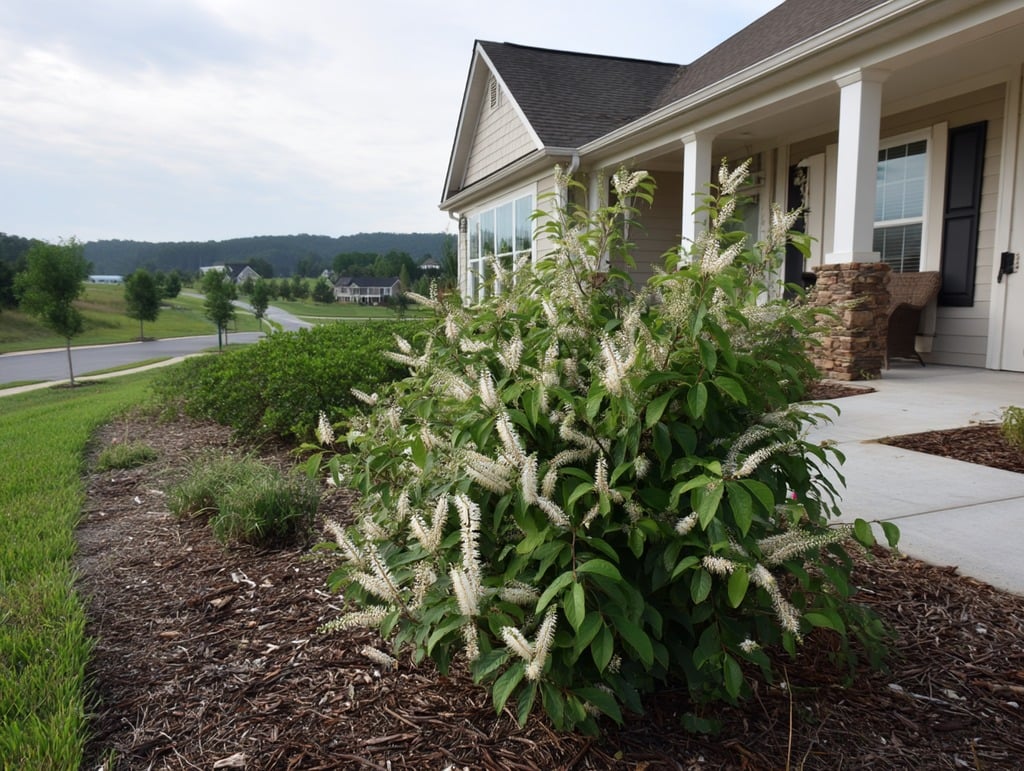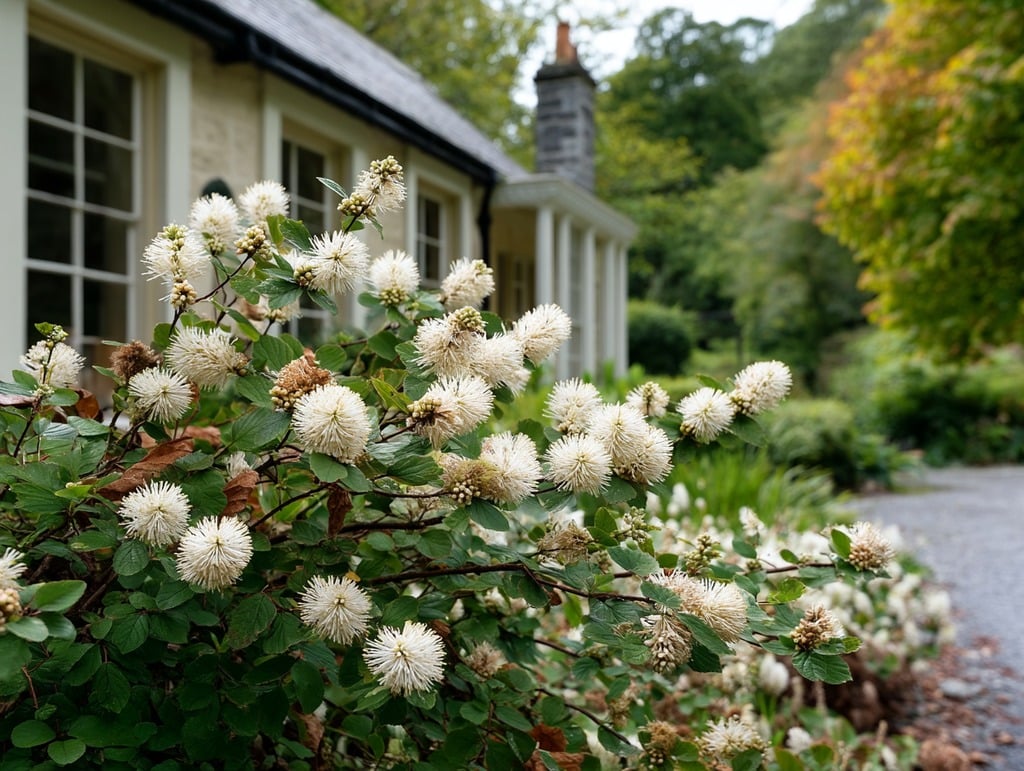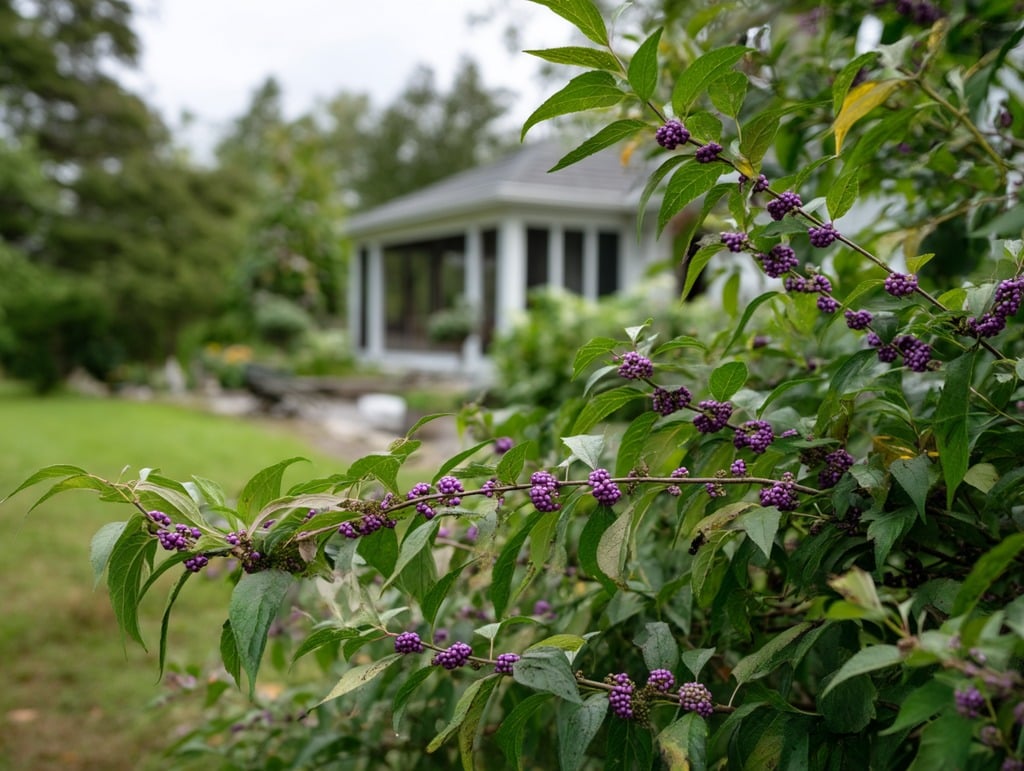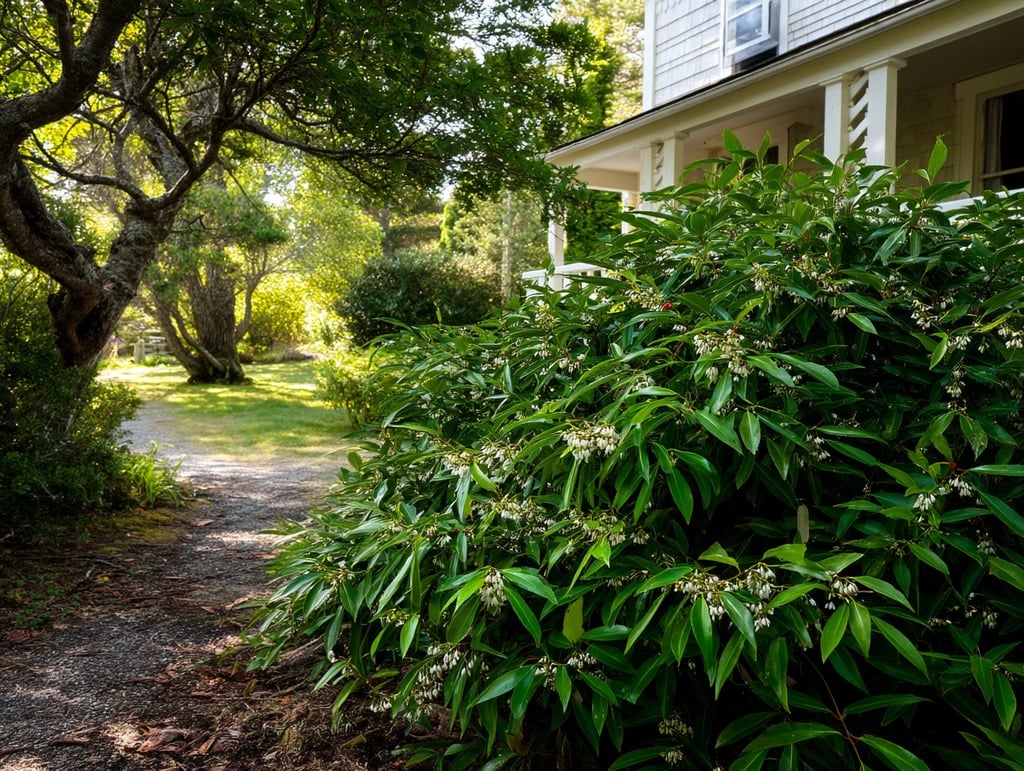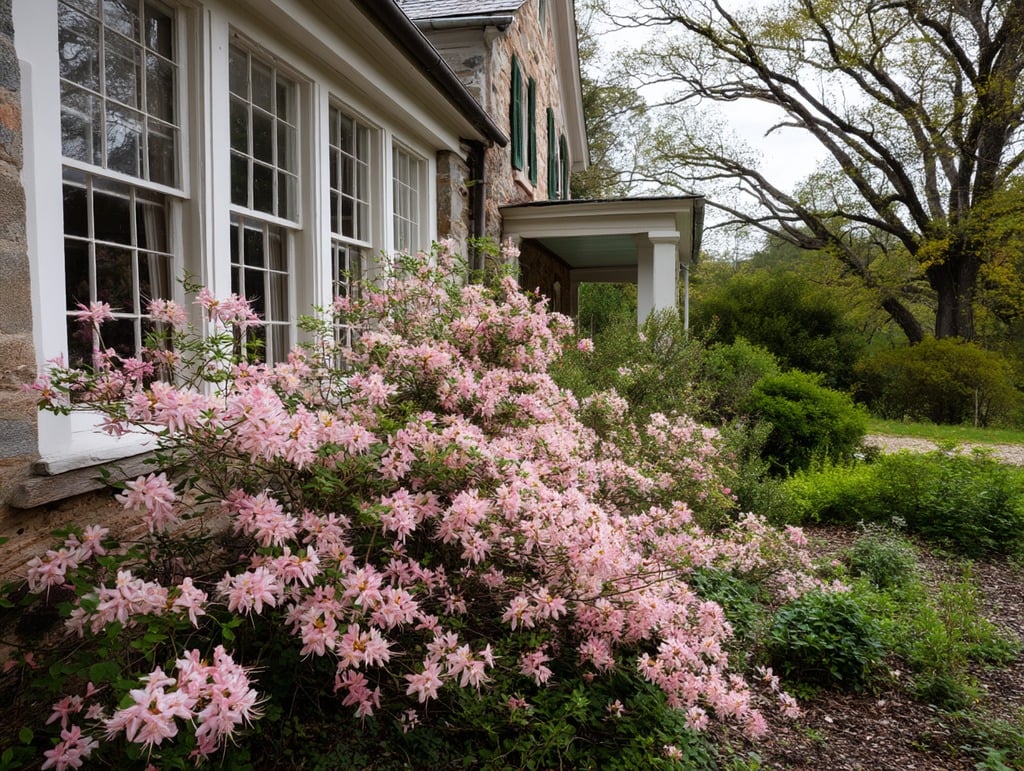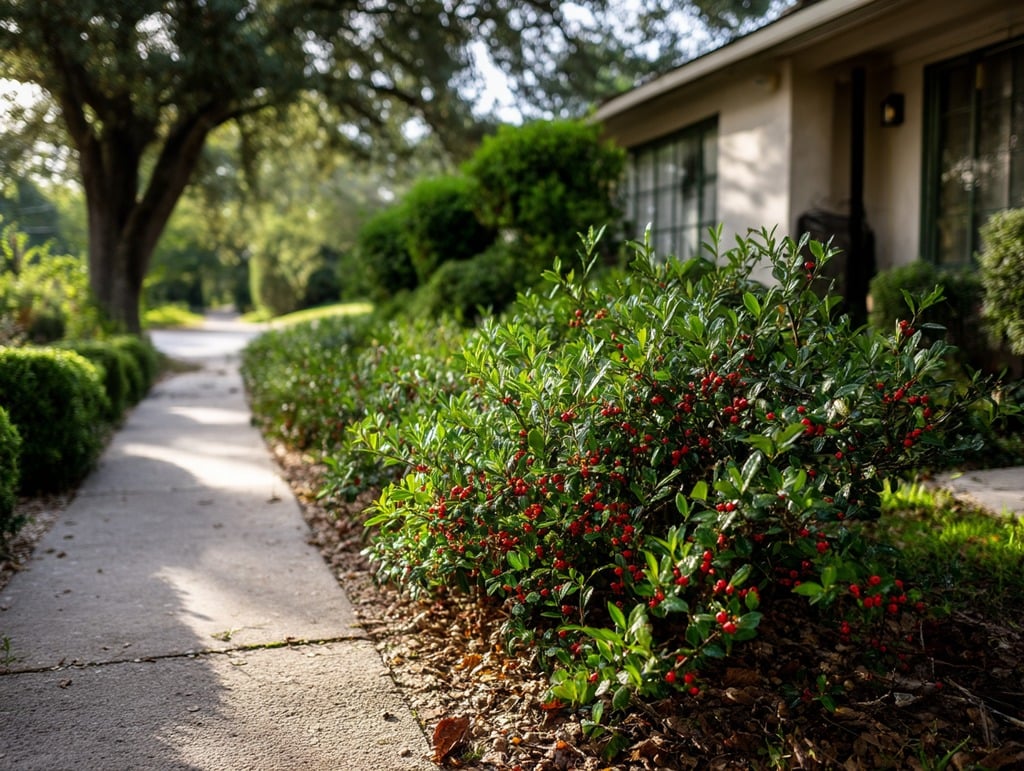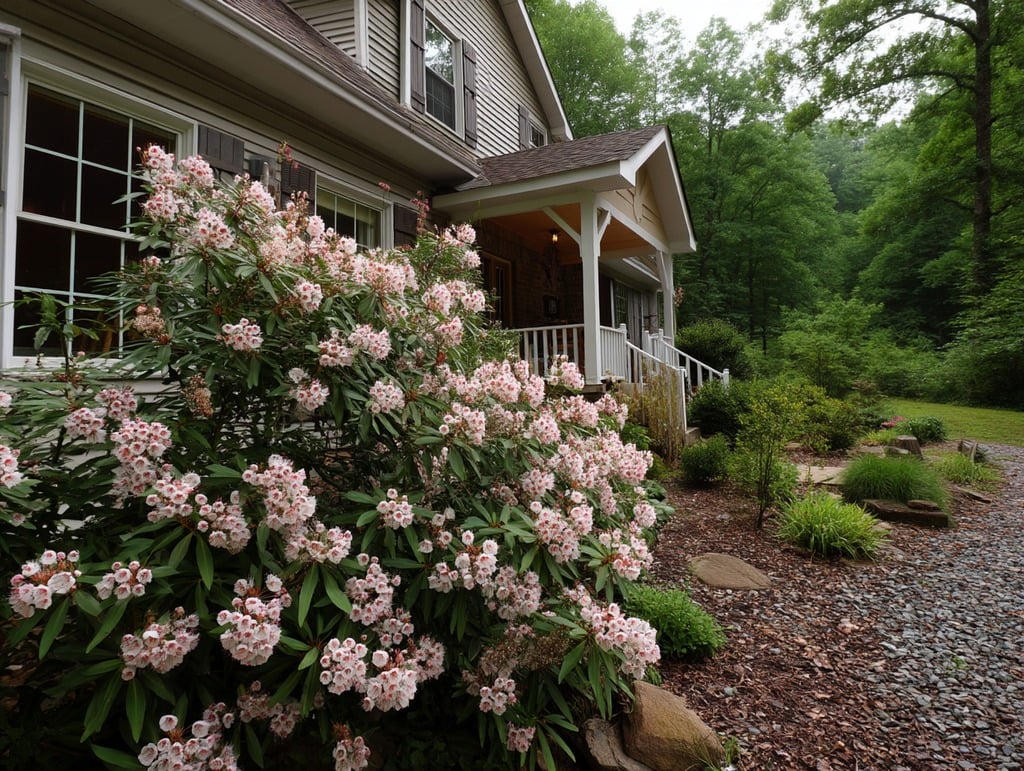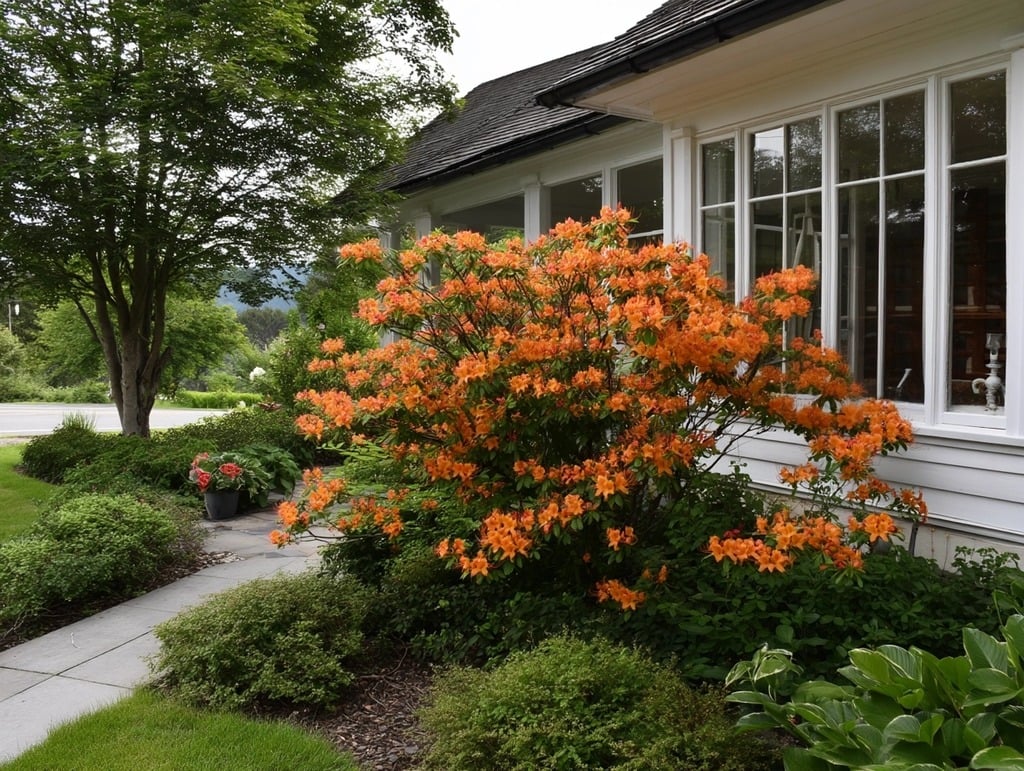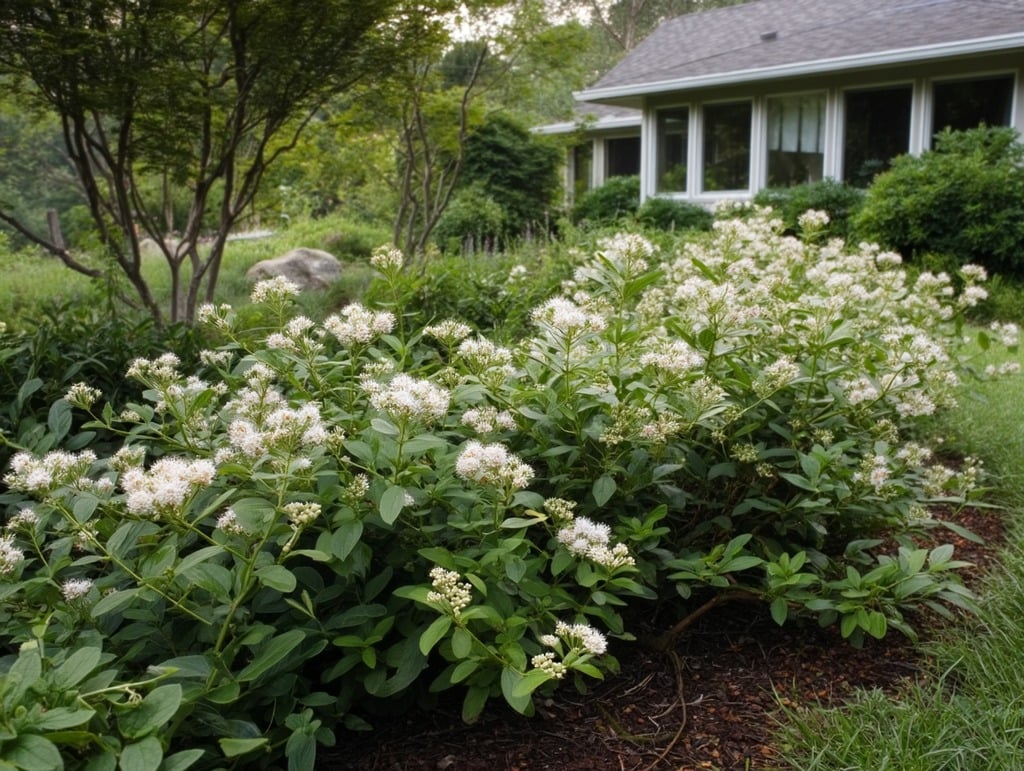If you’ve ever seen a cracked sidewalk or a buckled driveway caused by aggressive plant roots, you know how frustrating landscaping mistakes can be. While trees often get the blame, certain bushes and shrubs can also do long-term damage if they’re not carefully selected. But good news, North Carolina homeowners: there’s a long list of native shrubs that bring beauty, seasonal interest, and biodiversity to your yard—without putting your foundation or hardscaping at risk.
In this post, we’ll explore bushes native to North Carolina that are non-invasive, foundation-safe, and perfect for planting near your home, deck, patio, or sidewalk. Whether you’re in the Piedmont, Coastal Plain, or Mountain region, these species are well-suited for our state’s climate and soil—and better yet, they’ll play nicely with your home’s structure.
Please note: This blog contains affiliate links. If you choose to click the link and make a purchase, the author will receive compensation. This is at no extra cost to you. It’s like a high-five for providing useful content.
Why Native Shrubs?
Before we dive into plant profiles, it’s worth noting why native shrubs are such a smart choice:
-
They’re adapted to local conditions, which means less maintenance, fewer pests, and better drought tolerance.
-
They support native wildlife, including birds, pollinators, and beneficial insects.
-
They’re less likely to become invasive, which protects your yard—and your neighbors’—from overgrowth.
-
And, if chosen wisely, they won’t send out aggressive roots that crack concrete or invade crawl spaces.
So let’s get into it. These are our top picks for native North Carolina shrubs that are not only gorgeous and functional—but also foundation-friendly.
1. Inkberry (Ilex glabra)
USDA Zones: 5-9
Sun Exposure: Full sun to partial shade
Mature Size: 4–6 ft tall and wide
Soil: Moist, acidic soils (but very adaptable)
Inkberry is a fantastic alternative to boxwood—and best of all, it’s native! This evergreen holly shrub has smooth, dark green leaves and produces black berries that birds love. It grows in a compact, rounded shape, making it great for foundation plantings or low hedges.
Why it’s foundation-safe: Inkberry has a fibrous, shallow root system that doesn’t spread aggressively. It’s one of the few evergreen natives that thrives close to homes without causing structural headaches.
2. Oakleaf Hydrangea (Hydrangea quercifolia)
USDA Zones: 5-9
Sun Exposure: Partial shade to full sun
Mature Size: 4–8 ft tall and wide
Soil: Well-drained, slightly acidic to neutral
This showstopper boasts large, cone-shaped flower clusters and stunning oak-like foliage that turns deep red and purple in fall. Native to the Southeast—including much of North Carolina—it’s ideal for adding a lush, ornamental vibe near patios and decks.
Why it’s foundation-safe: Oakleaf hydrangeas have non-invasive root systems that stay close to the surface, making them safe for planting near foundations, walkways, and fences.
3. Sweet Pepperbush (Clethra alnifolia)
Also known as: Summersweet
USDA Zones: 3-9
Sun Exposure: Full sun to shade
Mature Size: 3–6 ft tall and wide
Soil: Moist, acidic soils (can tolerate clay)
This fragrant, flowering shrub bursts with upright spikes of white or pink blooms in mid-to-late summer—and it’s a pollinator magnet. It’s also highly deer-resistant and tolerant of wet soil, making it great for low spots near your home.
Why it’s foundation-safe: Sweet pepperbush grows slowly, and its roots don’t seek out foundations or hardscapes. It’s a go-to for planting near walkways, downspouts, or front porches.
4. Virginia Sweetspire (Itea virginica)
USDA Zones: 5-9
Sun Exposure: Full sun to part shade
Mature Size: 3–5 ft tall and wide
Soil: Tolerates a variety of soils, including wet and clay-heavy
With graceful white flowers in spring and brilliant red-purple fall color, this native shrub is both beautiful and adaptable. It does well in rain gardens, near driveways, and along the sides of houses.
Why it’s foundation-safe: Sweetspire spreads slowly by root suckers but is not aggressive or invasive. Its roots are fine-textured and non-damaging to structures, especially when given moderate spacing.
5. Fothergilla (Fothergilla major or F. gardenii)
USDA Zones: 4-9
Sun Exposure: Full sun to partial shade
Mature Size: 2–5 ft tall (F. gardenii is more compact)
Soil: Moist, well-drained acidic soil
This lesser-known gem is native to the Southeastern U.S. and offers fragrant white bottlebrush blooms in spring, along with stunning orange and red fall foliage. Its mounded habit makes it ideal for planting under windows or near entryways.
Why it’s foundation-safe: Fothergilla has a clumping growth habit and non-invasive roots. It’s a great low-maintenance option for front yards or even as part of a layered foundation planting scheme.
6. American Beautyberry (Callicarpa americana)
USDA Zones: 6-10
Sun Exposure: Full sun to part shade
Mature Size: 3–6 ft tall and wide
Soil: Adaptable to most soils
Known for its vibrant purple berries in fall, this shrub adds a splash of unexpected color and supports local wildlife. While it can get a little wide, it’s easy to prune to shape and thrives in sun-dappled spots near the home.
Why it’s foundation-safe: Beautyberry’s roots are shallow and non-aggressive, making it an excellent shrub for planting along foundations or around patios—especially in areas that get good air circulation.
7. Coastal Doghobble (Leucothoe axillaris)
USDA Zones: 5-9
Sun Exposure: Partial to full shade
Mature Size: 3–6 ft tall and wide
Soil: Moist, acidic soils
This arching evergreen shrub thrives in shady, moist environments, like the north side of a home or beneath taller shrubs and trees. It features leathery green leaves and small bell-shaped white flowers in spring.
Why it’s foundation-safe: Doghobble’s roots are non-invasive and well-behaved, even when planted close to buildings. It’s an excellent native substitute for non-native azaleas or rhododendrons.
8. Wild Azalea (Rhododendron periclymenoides and R. canescens)
USDA Zones: 5-9
Sun Exposure: Partial shade to full shade
Mature Size: 4–10 ft tall, depending on variety
Soil: Well-drained, acidic soils
Native azaleas offer springtime blooms in shades of pink, coral, and white, with a lighter, more delicate structure than their non-native cousins. They do best in woodland or filtered shade areas around your home.
Why it’s foundation-safe: Unlike some hybrid azaleas with denser, more aggressive roots, native azaleas have fine, fibrous root systems that are not known to cause structural issues. Just give them a few feet of clearance, and you’re golden.
9. Dwarf Yaupon Holly (Ilex vomitoria ‘Nana’)
USDA Zones: 7-9
Sun Exposure: Full sun to part shade
Mature Size: 2–5 ft tall and wide
Soil: Tolerant of most soils, including sandy and coastal
Though the name might sound off-putting, Dwarf Yaupon Holly is one of the most popular native evergreen shrubs for Southern landscapes. It has small, dense leaves and a tidy, rounded growth habit that makes it a favorite for low hedges and foundation beds.
Why it’s foundation-safe: The “Nana” variety is a slow grower with compact roots that stay near the surface. It’s very manageable and doesn’t develop invasive suckers or large taproots that could disturb hardscapes.
10. Mountain Laurel (Kalmia latifolia)
USDA Zones: 4-9
Sun Exposure: Partial shade
Mature Size: 5–10 ft tall and wide
Soil: Moist, well-drained, acidic soils
This iconic Appalachian native is prized for its clusters of pink and white flowers that bloom in late spring. It grows well in woodland settings and adds a touch of elegance to shaded areas around homes.
Why it’s foundation-safe: Mountain Laurel’s root system is slow-growing and compact, making it a safe option near home foundations when planted with a few feet of spacing. It’s best used in shaded front yard beds or under mature trees.
11. Flame Azalea (Rhododendron calendulaceum)
USDA Zones: 5-8
Sun Exposure: Partial shade
Mature Size: 4–8 ft tall
Soil: Well-drained, acidic soil
A cousin to wild azalea, this beauty lights up spring with vivid orange, yellow, and red blooms—living up to its fiery name. It’s native to the mountain regions of North Carolina but can be grown in the Piedmont as well.
Why it’s foundation-safe: Flame Azaleas have non-invasive root systems and a clumping growth habit. Like other native rhododendrons, they’re best planted a few feet away from the house in woodland-style plantings.
12. New Jersey Tea (Ceanothus americanus)
USDA Zones: 4-8
Sun Exposure: Full sun to part shade
Mature Size: 2–3 ft tall and wide
Soil: Well-drained, dry to medium soils
Though lesser known, this compact native shrub is a pollinator powerhouse. It produces frothy white flowers in late spring and was historically used as a tea substitute during the Revolutionary War—hence the name.
Why it’s foundation-safe: Its small stature and shallow root system make it an excellent fit for planting in tight spaces, rock gardens, or directly in front of low windows. It doesn’t spread aggressively or damage nearby hardscapes.
General Planting Tips Near Foundations
Even with non-invasive shrubs, there are a few best practices to follow when planting near your home:
-
Leave a gap: Keep at least 2–3 feet between the mature edge of the shrub and your home’s foundation to allow for airflow and prevent moisture buildup.
-
Mind the mulch: Mulch lightly around the base of your plants but keep it away from direct contact with siding or foundations.
-
Don’t overwater: Native shrubs typically don’t need excessive irrigation once established. Overwatering near foundations can lead to excess soil movement.
-
Know your zone: North Carolina ranges from USDA Zones 6b to 8a. Always check that your chosen shrub is suitable for your region before planting.
Creating a Native Landscape Near Your Home
Native shrubs are more than just plants—they’re a sustainable landscaping choice that benefits both your home and the environment. Here are a few creative ways to incorporate these foundation-safe natives into your outdoor design:
Front Yard Foundation Beds
Use a mix of inkberry, dwarf yaupon holly, and fothergilla for evergreen structure, seasonal color, and low maintenance near your home’s foundation. These shrubs stay tidy and won’t interfere with utilities or siding.
Shady Side Yards
Try a combination of wild azalea, coastal doghobble, and mountain laurel for those shady spots where grass struggles. These natives thrive in dappled light and provide year-round interest with their foliage and blooms.
Rain Gardens & Moist Areas
For areas with runoff or poor drainage, Virginia sweetspire, sweet pepperbush, and oakleaf hydrangea are all excellent choices. Their roots stabilize soil while preventing water from pooling around your foundation.
Wildlife-Friendly Borders
Plant American beautyberry, New Jersey tea, and flame azalea to attract songbirds, bees, and butterflies. These shrubs not only provide nectar and berries but also add dynamic beauty to your landscape with minimal upkeep.
What to Avoid: Non-Native and Invasive Shrubs
While we’re talking about what to plant, it’s worth mentioning a few shrubs to avoid near foundations—especially those that are non-native or have aggressive root systems:
-
Privet (Ligustrum spp.) – Often invasive and known for sending out strong roots that can interfere with sidewalks and plumbing.
-
Japanese Barberry (Berberis thunbergii) – An aggressive spreader with sharp spines and a tendency to harbor ticks.
-
Nandina (Nandina domestica) – Non-native and mildly toxic to birds, with aggressive clumping roots.
-
English Ivy (Hedera helix) – While not a shrub, it’s frequently planted along foundations and can cause serious structural damage.
Sticking with native plants not only avoids these pitfalls—it also supports a healthier, more resilient landscape.
Final Thoughts: Safe Roots, Beautiful Results
When it comes to curb appeal, function, and sustainability, native shrubs offer a win-win. With North Carolina’s unique ecosystems—from the barrier islands to the Blue Ridge Mountains—native plantings are a smart, eco-conscious way to beautify your yard without sacrificing peace of mind.
The key is to choose shrubs that won’t just look good, but also behave well in the long run. That means:
-
Non-invasive, shallow roots
-
Proper spacing from your foundation
-
Regional adaptability
-
Support for native wildlife
By embracing native shrubs, you’re doing more than making your yard look good—you’re investing in your property’s long-term health, reducing maintenance, and helping North Carolina’s native ecosystems thrive.
If you’re ready to refresh your landscaping—or are preparing to list your home and want to make the best first impression—we can help. At The Cameron Team, our local real estate experts know what adds value to homes in southeastern North Carolina, from smart plantings to strategic curb appeal upgrades.
Have questions about preparing your property for sale or finding the perfect home with an already stunning yard? Reach out today—we’d love to help you grow your vision, one shrub at a time.

